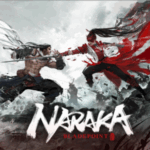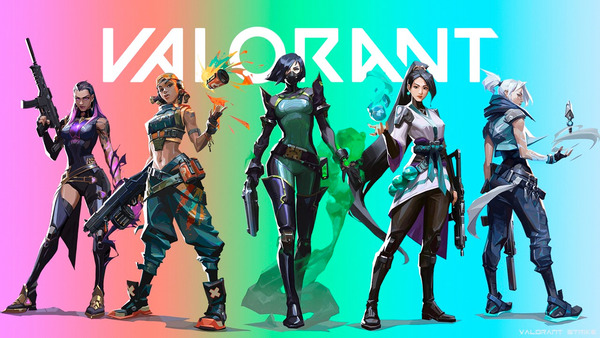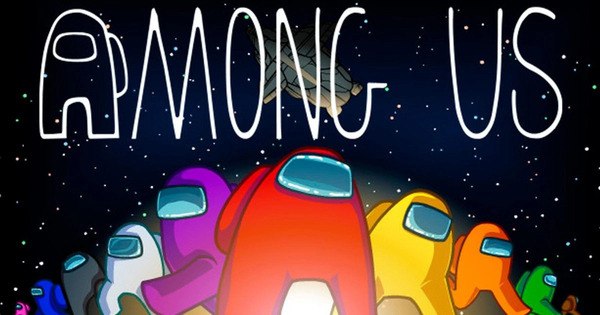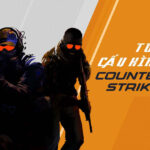Candy Crush Saga: From Casual Curiosity to Global Puzzle Powerhouse
Opening Overview
Candy Crush Saga didn’t just popularize match‑3 puzzles on mobile—it redefined what “casual gaming” could mean at global scale. Launched by King in 2012, it fused approachable swipe‑to‑match mechanics with clever level goals, escalating challenge curves, lives‑based pacing, and social nudges that helped it spread across Facebook and smartphones alike. Over time it evolved into a long‑tail live‑ops platform with thousands of levels, recurring themed events, rotating boosters, and cross‑device progression. This deep‑dive traces Candy Crush Saga’s lifecycle over more than a decade: its design DNA, pacing psychology, monetization balance, level tuning, retention systems, community culture, accessibility factors, and how it still hooks new players in 2025. You’ll also find structured pros and cons, expert play tips, and a rating to help you judge whether Candy Crush Saga deserves space on your home screen today.
1. Puzzle Lineage and Pre‑Launch Foundations (Before 2012)
Match‑3 Roots and Casual Design Philosophy
Candy Crush Saga drew from a long lineage of tile‑matching games (think Bejeweled) but aimed to make the format friendlier, more flavorful, and goal‑driven. Instead of endless score chases, levels shipped with bite‑sized objectives—clear jelly, drop ingredients, reach target scores—each altering board strategy and move prioritization.
Why Candy? Thematic Stickiness
Bright confectionery visuals gave instant readability: color blocks become candies; special matches become striped, wrapped, or color bomb treats. The candy theme simplified pattern recognition on small screens and appealed to broad demographics, including players who might not self‑identify as “gamers.”
Pacing for Mobile Sessions
Early design targeted short, repeatable bursts—perfect for commute play. Limited lives created natural stop points while also incentivizing social gift exchanges and, eventually, microtransactions to keep the run going.
2. 2012 Launch & Early Viral Growth
Facebook + Mobile Synergy
Candy Crush Saga first gained traction on Facebook before exploding on mobile. Seamless cross‑sync meant progress traveled with you, letting players sneak in levels between desktop sessions. Social leaderboards, map progression, and friend‑gate unlocks made invitations functional—not just spammy.
Viral Loops and Word of Mouth
Because stalled players could request lives or tickets from friends, each roadblock became a sharing moment. This built organic network spread; the more friends who joined, the easier progression became. The visible world map—peppered with your friends’ avatars—reinforced “just one more level” competition.
Early Monetization Signals
Optional purchases to refill lives, buy boosters, or unlock episodes appeared early but were tuned to feel skippable. Many players advanced purely on skill and patience; paying sped things up, which helped Candy Crush maintain a “play free, pay convenience” identity in its first big growth wave.
3. The Saga Map, Episodes, and Expanding Content Pipeline (2013–2014)
World Map Psychology
Candy Crush’s scrolling path of episodes is more than a menu—it’s a motivation engine. Each completed node pops celebratory animations; unfinished nodes tease progress. Milestone markers (every ~15 levels per episode) break the journey into manageable sprints, supporting long‑term retention.
Episode Variety and Difficulty Rhythm
King learned to sequence easy‑medium‑spike patterns: a run of breezier boards restores confidence before a challenging “gate” level demands strategic use of specials or boosters. These spikes are carefully spaced to maintain engagement yet encourage either retries (time‑gated by lives) or selective spending.
Content Cadence
New episodes rolled out regularly, keeping dedicated players from “finishing the game.” Long‑term success rested on this production rhythm: design tools, playtest pipelines, and analytics feedback loops allowed King to monitor completion rates and tune future boards accordingly.
4. Mechanics Deep Dive: Candies, Specials, and Objective Types
Core Matches and Special Candy Creation
Match 3 clears basic candies. Match 4 creates striped candies blasting rows or columns. L‑ or T‑shaped 5s produce wrapped candies that explode twice. Straight 5s form color bombs, removing all candies of one color. Combining specials multiplies impact—striped + wrapped triggers cross‑board sweeps; color bomb + striped transforms the board into chain clears.
Objective Variants
Different level goals change how you value moves:
-
Clear Jelly: target coated tiles; cascading clears matter.
-
Ingredient Drop: pathfinding—open lanes for cherries/hazelnuts.
-
Timed Score (early era): speed swiping plus cascade luck.
-
Collect Orders: intentionally craft specific specials or color counts.
-
Licorice/Chocolate Management: containment puzzles where blockers regrow or resist clears.
Board Geometry & Blockers
Licorice locks, chocolate spread, marmalade coatings, multi‑hit frosting, conveyors, teleporters, and candy cannons all alter planning depth. Candy Crush slowly layers these mechanics so new players learn by doing while veterans juggle complex board states at higher levels.
5. Monetization, Lives, and Player Psychology
Lives as Pacing Currency
You start with a small number of lives; each failure spends one, and they recharge over time. This creates a natural pause that regulates binge difficulty frustration. It also sets the stage for tension: do you wait, ask a friend, or spend?
Boosters and Gold Bars
Boosters—like lollipop hammers, extra moves, or color bombs—offer tactical outs when you’re close to a win. Gold Bars function as the premium currency for purchasing those helpers, unlocking stuck progress, or bypassing episode gates. Well‑timed offers (after multiple fails) provide friction‑release moments that monetize frustration without hard paywalls.
The “Almost Beat It” Hook
Candy Crush’s analytics track fail states; offering +5 moves after you fall short by one jelly is a proven retention and monetization trigger. Because wins feel earned even when aided, light spenders often justify small, repeated purchases.
6. Live Ops, Events, and Seasonal Engagement (2014–Present)
Limited‑Time Challenges
Rotating events—like special challenge tracks, booster‑earning mini‑games, or time‑boxed score races—re‑engage lapsed players. Event UIs frequently sit atop the main map, inviting a quick detour that can reward power‑ups for story progression.
Streaks, Daily Rewards, and Calendars
Login streak systems drip‑feed boosters, encouraging routine play. Daily spins or prize wheels add unpredictability; even low‑stakes rewards can pull players back into the core loop where they resume stuck levels.
Themed Seasons & Collaborations
Over the years Candy Crush has featured seasonal skins (winter candy, Halloween treats), themed episodes, and cross‑promotional tie‑ins. Cosmetic change keeps the sugar aesthetic fresh while reminding players the game is actively cared for.
7. Data‑Driven Difficulty Tuning and Player Segmentation
Telemetry‑Based Level Adjustments
Because millions of attempts generate granular data, King can see where players stall. High‑friction levels might be softened (more starting boosters, fewer blockers) or left intentionally tough if they align with monetization tolerances. Some levels have gone through multiple post‑release balance passes.
Player Segments: Skillful, Patient, Paying, Social
Analytics help cluster behaviors:
-
Skillful grinds clear without spending but may need new challenges.
-
Patient social players trade lives and progress slowly.
-
Impulse spenders respond to targeted offers.
-
Completionists chase the map edge and consume content fastest.
Adaptive Offers
Dynamic pricing or bundle timing can surface more attractive deals to players stuck for many attempts, giving them a sense of agency while nudging revenue. This behind‑the‑scenes adaptability is a major reason Candy Crush sustains such a long lifecycle.
8. Social Layers, Community Culture, and Cross‑Device Play
Lives, Leaderboards, and Friendly Rivalry
Seeing a friend 10 levels ahead on the map motivates catch‑up sessions. Giftable lives reduce downtime friction, while weekly score comparisons on select levels provide recurring micro‑competitions.
Community Tips & Strategy Sharing
Because board layouts are fixed per level, communities circulate solution videos, move‑efficient walkthroughs, and “seed luck” tips (restart until candy distribution favors your objective). Advanced players discuss probability management—e.g., when to trigger cascades vs. preserve board structure.
Cross‑Device Sync and Mobility
Cloud sync ensures your progress follows you between phone, tablet, and desktop app versions. Lightweight session design makes it the ultimate “waiting room” game: two minutes, a few swipes, progress saved.
9. Technical Evolution, Accessibility, and UX Over Time
Performance & Platform Footprint
Candy Crush runs on a wide range of hardware, from budget Android phones to tablets and modern PCs. Asset streaming and lightweight effects help maintain smooth input response, critical when boards fill with cascading clears.
Visual Clarity & Color Contrast
High contrast candy colors support pattern spotting, though colorblind modes have historically been limited; later updates introduced improved iconography and pattern overlays on certain specials to help non‑color cues. Font scaling and simplified UI flows on small screens improved usability across device types.
Session Length Controls & Notifications
Push notifications for refilled lives or event starts keep engagement high but can be toggled; players controlling alerts maintain healthier play rhythms. Timed refill pacing can help avoid burnout—though impatient players may still spend to keep momentum.
































